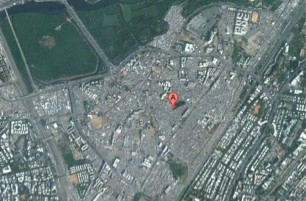
By Michael McClenathan
Formalizing Dharavi’s $1 billion economy without leaving behind its residents
Mumbai, India’s bustling financial hub, is home to 20 million people (UN Habitat, 2011). Between 700,000 and one million people (Boano, Lamarca, & Hunter, 2011) live in Dharavi, a 2.39 square kilometer area in the center of Mumbai, one of the largest slums in Asia (Lewis, 2011), and one of the 30 largest slums in the world. Boano et al. (2011) have identified 85 distinct neighborhoods within Dharavi. Population density of Dharavi is around 293,000 people per square kilometer, using conservative population estimates. Some households have water taps, but there is an inadequate sewerage system, one toilet per 1,440 people (UNDP, 2006). Human waste collects in uncovered drains than run along Dharavi’s streets. Despite these conditions, Dharavi’s informal economy is estimated at over $1 billion (Yardley, 2011), consisting of manufacturing and recycling industry that process 80% of Mumbai’s plastic waste, and other materials from car batteries and electronic equipment to hotel waste (McDougall, 2007). Despite the productivity of the slum, many in Mumbai consider it an eyesore, and its location at the heart of India’s financial and entertainment center makes it a target for developers who aim to replace Dharavi with expensive condominiums and office space (Boano et al., 2011).
Although life in Dharavi is difficult, new residents continue to flock to the slum because wages there outpace those available to the rural poor (McDougall, 2007). This steady inflow of labor has enabled some longer-term Dharavi residents to grow successful businesses. Many residents are proud of Dharavi’s success, and hope the dynamics that enable that success will be allowed to continue (Boano et al., 2011). Still, challenges remain and are exacerbated by population growth. 15 families share a tap that operates for 2 hours a day (UNDP, 2006). The lack of sanitation has severe public health consequences, during monsoon season Dharavi’s open drains overflow, flooding streets with sewerage (UNDP, 2006). Further, the slum’s location is desirable to developers, which will likely force changes upon the residents of Dharavi in the near future (Yardley, 2011).
Policy towards Dharavi should be informed by its informal economy, its density, and the value of its real estate. The municipal authority of Mumbai should ensure that a transition of Dharavi’s residents to new housing is not accompanied by a destruction of their livelihoods. Mumbai should develop a formal and robust recycling industry and prioritize the hiring of Dharavi residents who process waste. Formalizing and relocating Dharavi’s successful businesses into new office space sited in Dharavi will benefit both Dharavi’s residents and the City of Mumbai.
This article is a product of Professor Shagun Mehrotra’s Global Urban Environmental Policy class. Views expressed are entirely those of the individual author.
References
Boano, C., Lamarca, M. G., & Hunter, W. (2011). The frontlines of contested urbanism: Mega-projects and mega-resistances in Dharavi. Journal of Developing Societies , 27 (3&4), 295’326 .
Google Maps. (2012). Map of Mumbai. Retrieved February 7, 2012, from Google Maps: http://maps.google.com/maps?q=dharavi+map&hl=en&prmd=imvns&biw=1241&bih=610&um=1&ie=UTF-8&ei=qOUwT6OTF4fqrAe4otW0BA&sa=X&oi=mode_link&ct=mode&cd=3&ved=0CDIQ_AUoAg
Lewis, C. (2011, July 6). Dharavi in Mumbai is no longer Asia’s largest slum. Retrieved February 3, 2012, from The Times of India: http://articles.timesofindia.indiatimes.com/2011-07-06/india/29742525_1_largest-slum-dharavi-nivara-hakk-sangharsh-samiti
McDougall, D. (2007, March 3). Waste not, want not in the £700m slum. Retrieved February 3, 2012, from The Observer: http://www.guardian.co.uk/environment/2007/mar/04/india.recycling
UN Habitat. (2011). Cities and Climate Change , Global Report on Human Settlements 2011. UN-Habitat. Earthscan.
UNDP. (2006). Human Development Report 2006. New York: United Nations Development Programme.
Yardley, J. (2011, December 28). In One Slum, Misery, Work, Politics and Hope. Retrieved February 6, 2012, from The New York Times: http://www.nytimes.com/2011/12/29/world/asia/in-indian-slum-misery-work-politics-and-hope.html?pagewanted=all